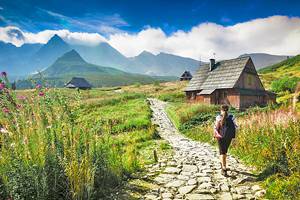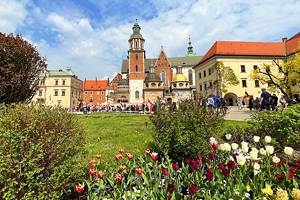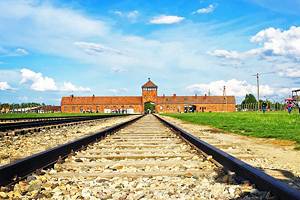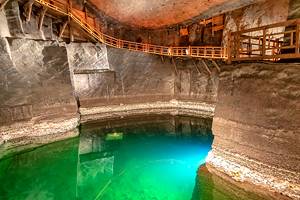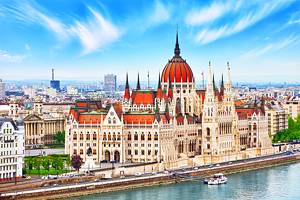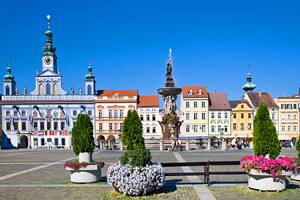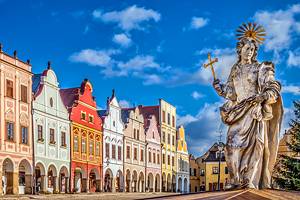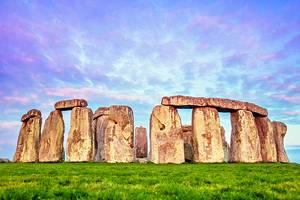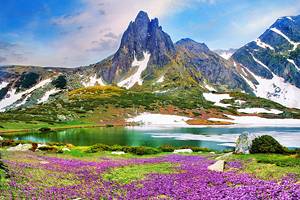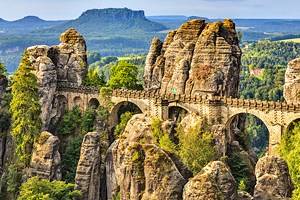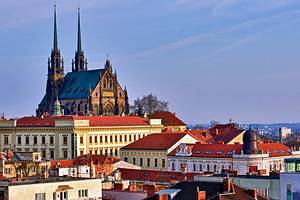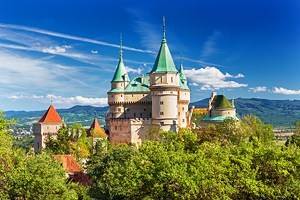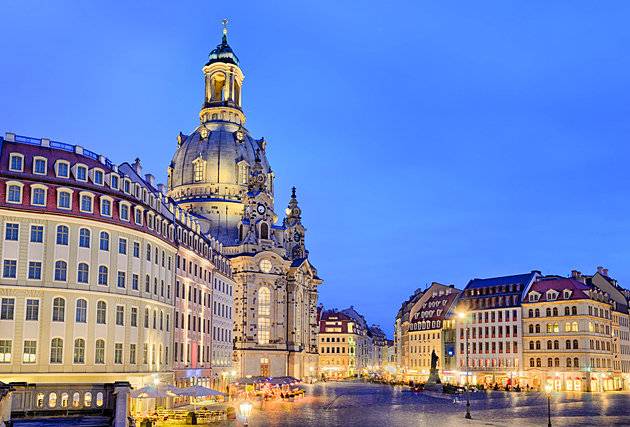Tourist Attractions in Poland
Poland offers an outstanding list of attractions, with 17 UNESCO World Heritage Sites and breathtaking natural sites — mountains, national parks, rugged coastlines, and even sand dunes. You'll also find some unexpected wonders, such as the world's oldest salt mine and a village filled with buildings covered in brightly colored floral art.
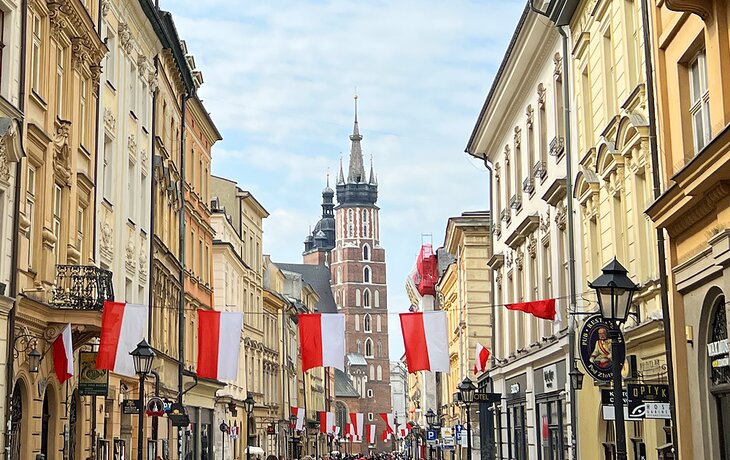
With its medieval architecture, troubled WWII history, and many villages that seem to be stuck in time, Poland is the perfect destination for history buffs and architecture lovers. Packed with things to do, Poland's cities are humming with the energy of art and culture and are a great starting point to discover everything the country has to offer.
No matter if you're after history, art, or nature, plan your visit with our list of the top tourist attractions in Poland.
Historic Center of Krakow
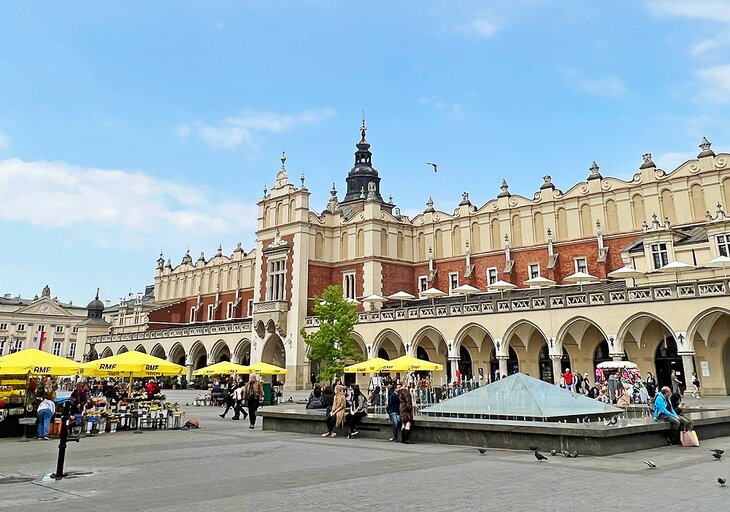
The historic center of Poland's former capital — Krakow — was named one of the premiere UNESCO World Heritage Sites when the designation began in 1978. The 13th-century merchants' town, tucked at the foot of the Wawel Castle, contains Europe's largest market square and one of the continent's oldest universities of international renown, Jagiellonian University.
Bolstered by a thriving salt trade from the nearby Wieliczka mine, arts and crafts flourished in Krakow throughout the centuries, with most merchants setting up shop in the Krakow Cloth Hall. Climb up the 110 stone steps of the 70-meter tall Town Hall Tower, which stands at the center of the Old Town, to get an incredible view of Rynek Glowny (Market Square) and the maze of surrounding streets.
Then, stroll down Royal Road. For nearly 300 years starting in the 14th century, this road served as the coronation path for Polish kings and still passes by many important landmarks. It starts at St. Florian's Gate and wraps around the castle.
To see what this historic area once looked like, visit the Rynek Underground Museum, where you can see relatively recently excavated merchant stalls and medieval streets.
Wieliczka Salt Mine, Wieliczka
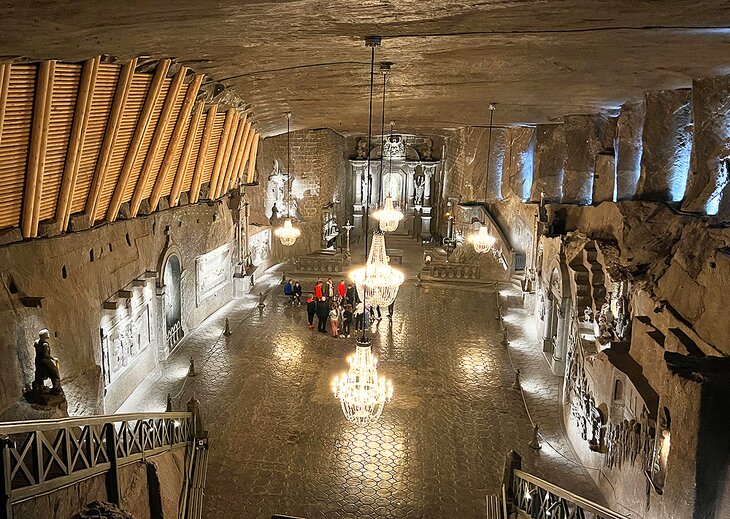
The 13th-century Wieliczka Salt Mine is just as important for the locals today as it was hundreds of years ago — but for a very different reason. One of the world's oldest and longest-working salt mines, it stopped commercial operations in 1996 and has since become a tourist attraction filled with sculptures made of salt.
Tour the mine to see corridors, chandeliers, and other spaces that miners carved out of rock salt throughout the centuries. The mine's original shafts and passageways — some as deep as 327 meters underground — have been reopened and allow visitors to explore pits and chambers, walking past statues and alongside stunning architectural marvels. Deep into the mine, an underground lake shimmers against the candlelit walls.
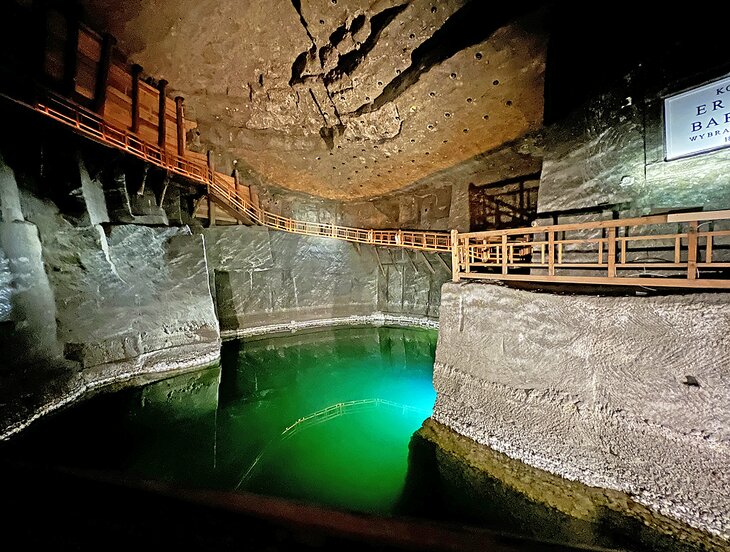
The main tourist attraction inside the mine, however, is the Chapel of St. Kinga, a 12-meter-high chamber where everything — including the elaborate chandeliers and furniture — is made of salt. The tour continues on to the Erazm Baracz Chamber, where you'll find a lake that's saltier than the Dead Sea and get chills when the tour guide turns on the light show set to Chopin's music. The experience ends at a museum that explains salt mining and what life in the mines was like.
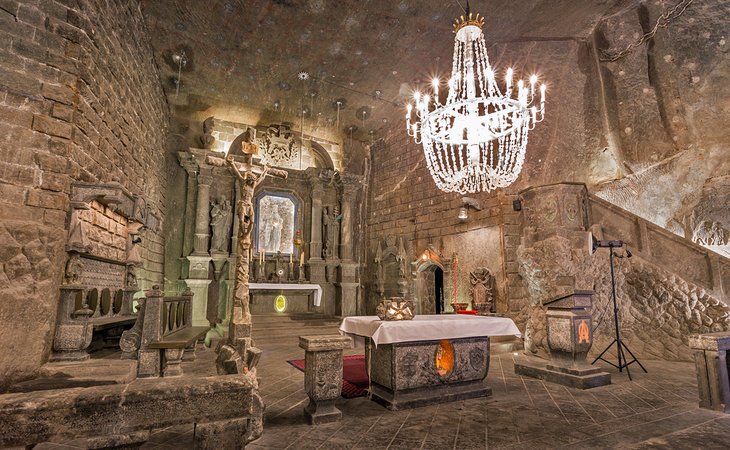
Be sure to wear comfortable shoes — touring the Wieliczka Salt Mine involves walking down hundreds of stairs. Fortunately, you won't need to walk back up — a lift will take care of the hard work and bring you back above ground.
Auschwitz-Birkenau Memorial and Museum, Oswiecim

The Auschwitz I and the Auschwitz II—Birkenau concentration camps are a different kind of must-see. Located about an hour west of Krakow, the camps offer a sobering look into the past.
Between 1940 and 1945, over 1.3 million people — most of whom were Jewish — were brought to the camps here from German-occupied countries. Political prisoners, Roma, and a number of other ethnicities were also sent here. Less than 10 percent of the people brought here survived their stay.
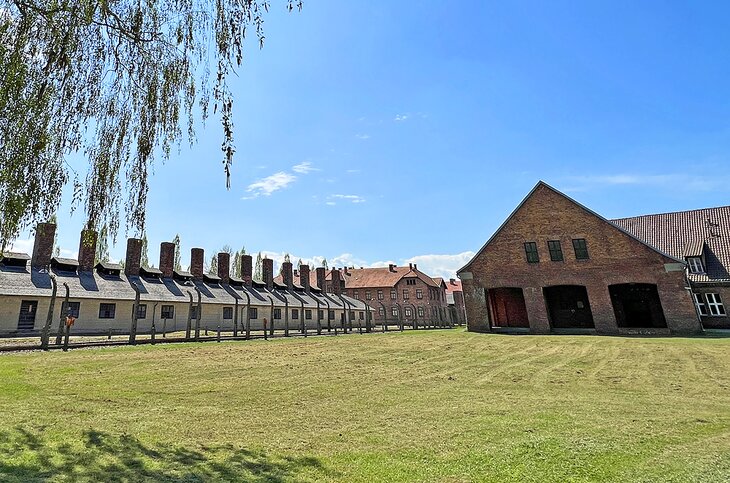
At the end of the war, as Soviet forces advanced into Poland, the Nazis blew up the gas chambers and crematoria before fleeing. Although they managed to destroy and burn down part of the camp, many structures remain standing to this day.
To explore the camps, which include over 300 barracks and hundreds of other buildings and crematoriums, your best option is to reserve a tour with an on-site guide-educator. A guided tour is required during busy periods, although you may be able to visit for free and explore on your own in the late afternoons during certain times of the year.
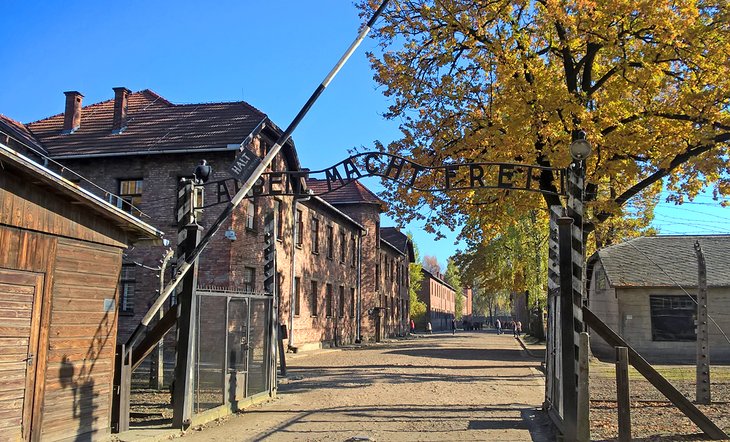
Warsaw Old Market Place, Warsaw
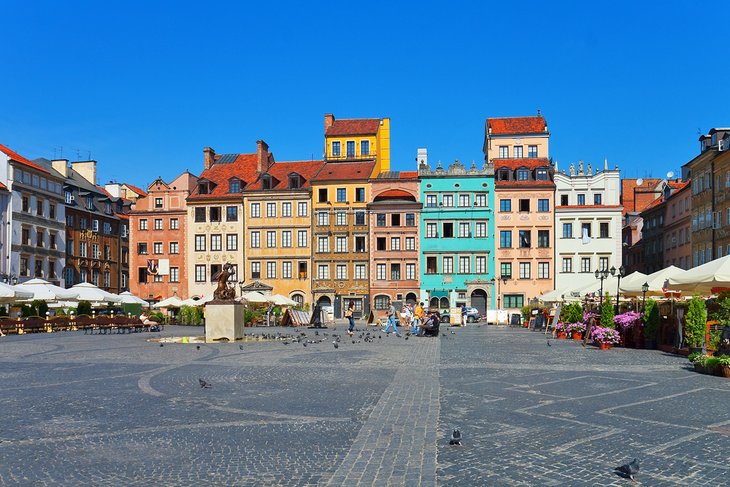
The oldest part of Warsaw, the Old Town Market Place dates back to the 13th century. Although 85 percent of the area was destroyed by the Nazis during World War II, it has since been restored to look exactly like it did when it was first built.
A mix of medieval architecture, Gothic, and colorful Renaissance buildings and merchant houses all coexist in the city's most popular square. The 19th-century bronze statue of a sword-wielding mermaid — a symbol of Warsaw's since medieval times — survived the War and still stands at the square.
Today, the Market Square is home to many cafés and restaurants, as well as street art sellers and many souvenir stalls. The main branch of the Historical Museum of Warsaw is also located here. It's home to a massive art collection and offers a look through the history of the city and country.
The Adam Mickiewicz Museum of Literature, just steps away, pays homage to one of Poland's most famous poets and writers.
Lazienki Park, Warsaw
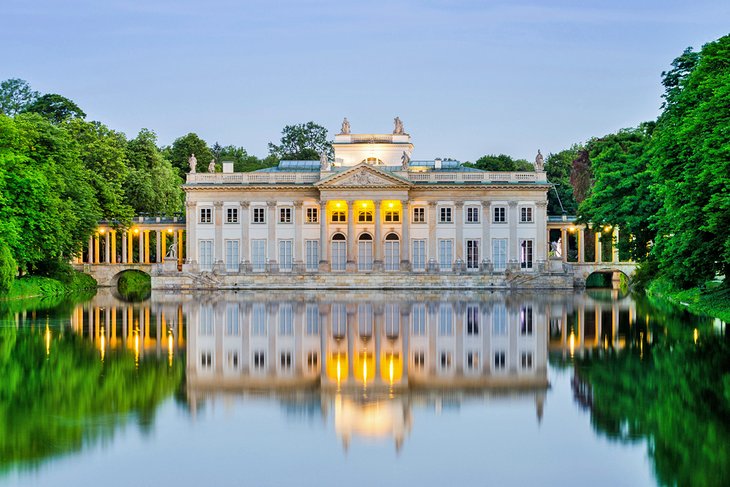
Lazienki Park covers 76 hectares of the city center, making it one of Poland's largest urban parks. Lazienki started life as a baths park for a nobleman in the 17th century. Today, the Palace on the Isle is open to the public, as are the gardens around it.
A Classical-theater isle stage (where performances are still held), a number of smaller palaces and structures that now serve as museums or galleries, and even a classicist temple dedicated to the goddess Diana are set in the gardens.
A large statue of classic Polish composer Frederic Chopin stands on the grounds of the park as well. The statue was purposely destroyed by German forces as they invaded Poland during WWII and reconstructed in 1958 using the original mold. Every Sunday afternoon, two free piano concerts are held at the foot of the statue at noon at 4pm.
Warsaw Rising Museum, Warsaw
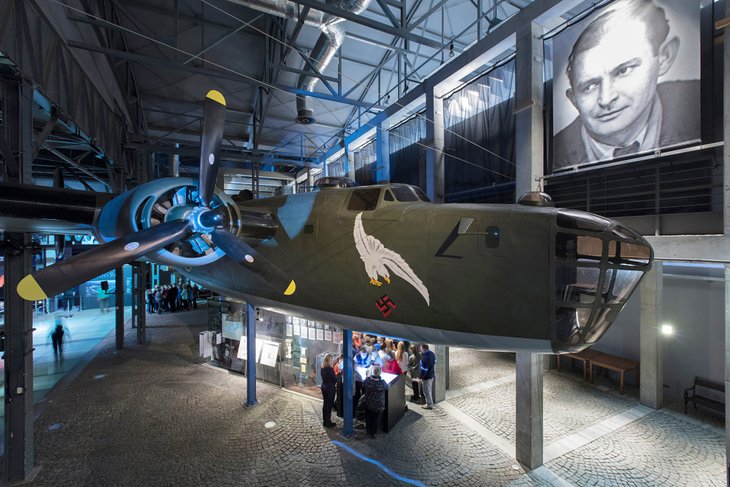
This is a museum dedicated to 1944's Warsaw Uprising, where the Polish Underground Resistance fought the German occupation of their city. The uprising lasted for 63 days, with massive casualties on both sides. It was the largest military effort undertaken by resistance forces against the German occupiers during the war.
Once the Polish forces surrounded them, the Nazis systematically destroyed a large number of historical buildings and structures in retaliation. The uprising was a massive effort by a poorly equipped and barely armed group of civilians trying to defeat the enemy — and the museum has done a remarkable job of bringing that spirit to life.
Exhibits here include many rooms and events brought to life through films, artifacts, recreations, and interactive displays, including replicas of the sewer tunnels used to move around the city in secret, an insurgent hospital, and a print shop where you can see posters and underground newspapers.
Several rooms show continuous original footage of the events, and there's a special section dedicated to the Nazi occupation and the atrocities committed during the uprising. Another worthwhile exhibit is the "little insurgent" room. It features a replica of the Warsaw statue that commemorates child soldiers who died in the uprising and a photo of an 8-year-old girl who worked as a nurse at a field hospital.
Wawel Royal Castle, Kraków
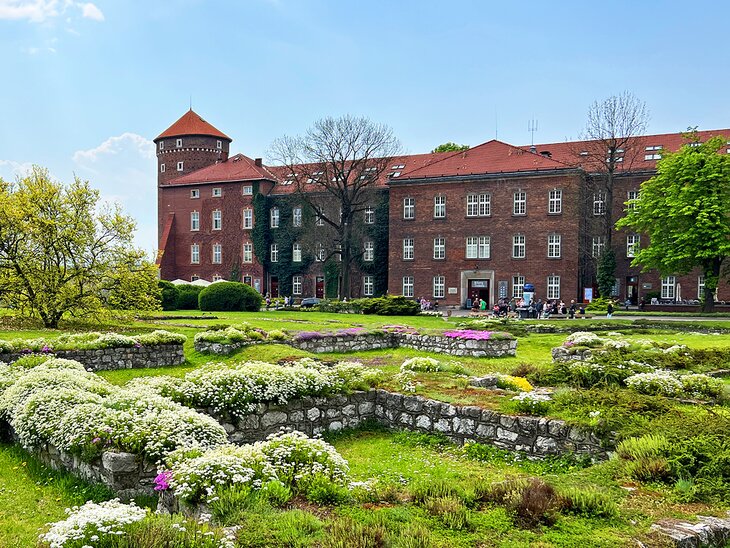
Wawel is an architecturally eclectic castle — the construction has medieval elements mixed with Baroque and Renaissance details. It's part of the Historic Center of Krakow, one of the first places in the world to be declared a UNESCO World Heritage Site, and has always been an important part of the history of the country.
King Sigismund I the Old, who lived in the castle in the 16th century, was an avid collector of art — so it makes sense that the castle is now an important art museum, focused mainly on paintings and curatorial work.
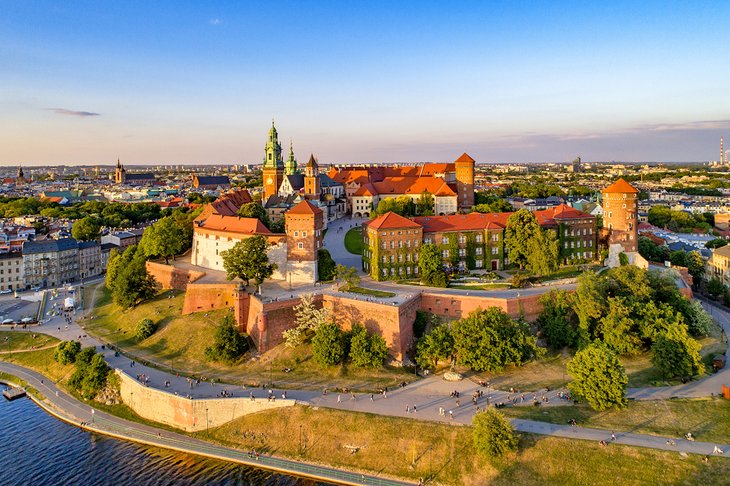
Additional collections include weapons and armor, porcelain and ceramics, lots of textiles and prints, and a significant amount of period furniture.
You can see wonderful views of Krakow and the Vistula River by climbing up the Sandomierska Tower on the castle grounds. If mythical reptiles are more of interest, head to the murky Dragon's Den. Legend has it that a maiden-eating dragon once lived here. After exiting, you can watch real fire spray from the mouth of a decades-old dragon statue.
St. Mary's Basilica, Krakow
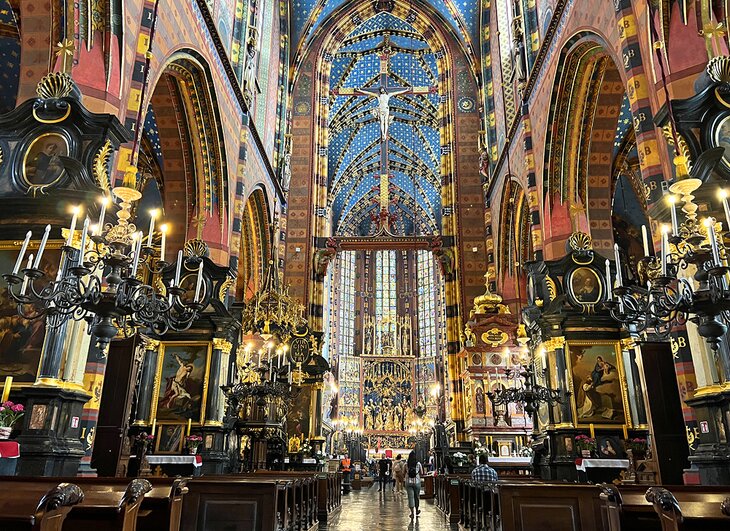
Often simply referred to as "St. Mary's," this stunning Brick Gothic church in the Historic Center of Krakow is distinctive for its towers of differing heights. Every hour of the year, a trumpeter plays a five-note Polish bugle call four times in a row — once in each cardinal direction — from the basilica's tallest tower. This traditional bugle call dates back to at least the 14th century and was once used to signal the opening and closing of the city gates and warn Krakow residents about impending dangers, such as fires.
Step inside the church to see spectacular stained glass windows, the vaulted blue nave decked out in gold stars, and colorful paintings on nearly all the walls. The high altar is considered to be one of the finest examples of Polish Gothic art.
Kraków Cloth Hall, Krakow
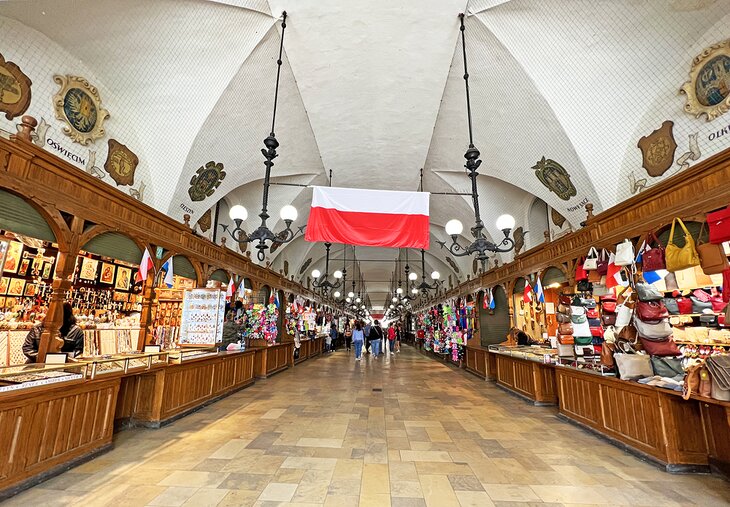
The Krakow Cloth Hall, which dates back to the Renaissance, was once the heart of international trade in Poland. During the 15th century, the Gothic hall with dozens of stunning archways was the main place for foreign merchants to gather to sell exotic spices from the East.
Traders from all over Europe also came here to buy salt from the Wieliczka Salt Mine. Textiles, leather, and silk were also traded here — imported from other countries for sale and produced locally.
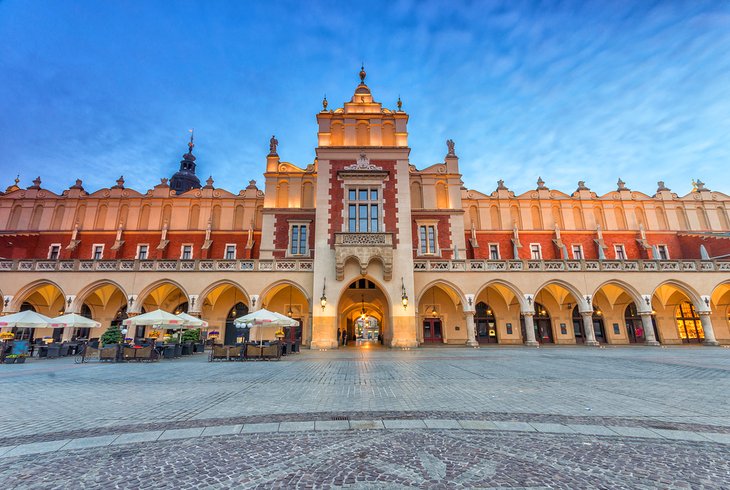
The Hall was renovated in the 19th century and used for years as an events center, where formal balls to honor visiting emperors and kings were held. The main floor is now again a center of commerce for tourists, with small stalls and galleries selling souvenirs, collectibles, and small pieces of art.
The Sukiennice Museum has taken over the second floor – home to a large collection of 19th-century Polish art.
Malbork Castle, Malbork
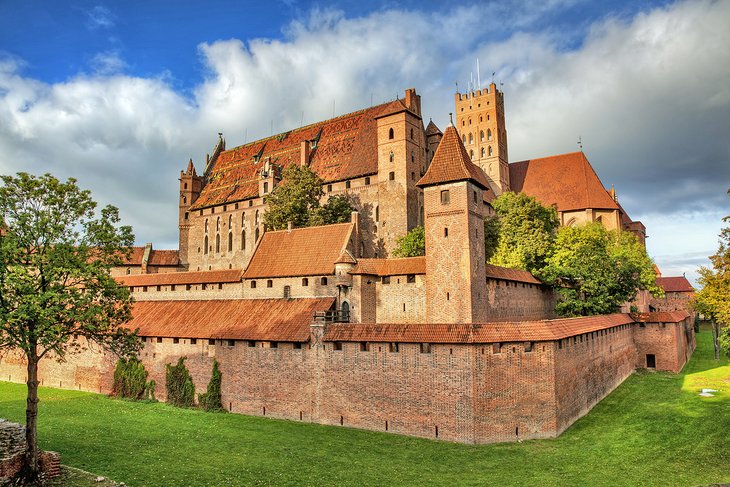
The Malbork Castle Museum is a 13th-century Teutonic castle that was originally built by the Teutonic Knights, a religious order that served as a crusading military unit. Although the castle started as a small fortification, it was subsequently expanded over the centuries and eventually became a massive structure. Once the largest Gothic building in Europe, Malbork Castle remains the world's largest castle by land area. It made its way onto the UNESCO World Heritage List in 1997.
Today, the castle serves as a museum, with many of its original rooms perfectly preserved. Highlights include a medieval kitchen with a 6-meter-wide fireplace, a collection of armor and weapons, and the knights' private toilet at the top of a tower.
In addition to historical collections, the castle also houses a number of exhibits, including one showcasing the conservation techniques used to restore the castle.
Every July, actors wearing period-era costumes reenact the Siege of Malbork, one of the greatest battles of the Middle Ages. Tourists can join tens of thousands of spectators to watch knights duel on horses, attend theatrical performances, hear live concerts, and watch flag juggling.
Oskar Schindler's Enamel Factory, Krakow
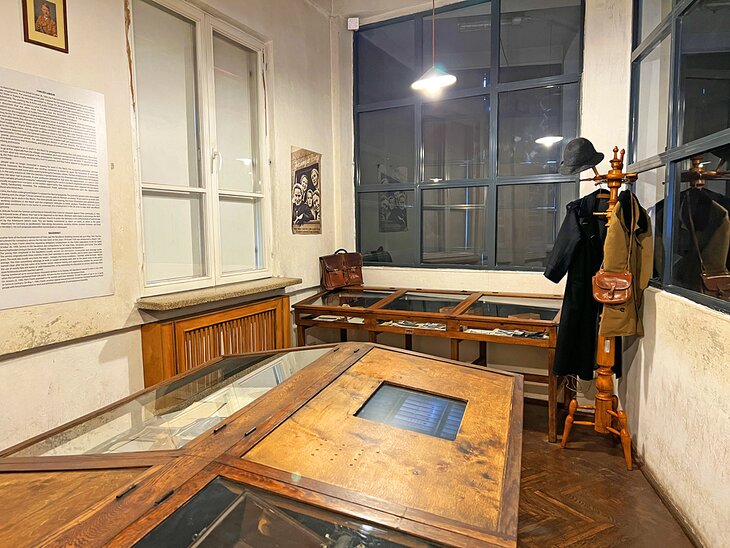
Oskar Schindler's enamel and metal factory — made famous by Steven Spielberg's 1994 movie — is now home to two museums. Part of the building has been converted into the Museum of Contemporary Art, while Schindler's former office and much of the former factory floor is now a branch of the Historical Museum of the City of Krakow.
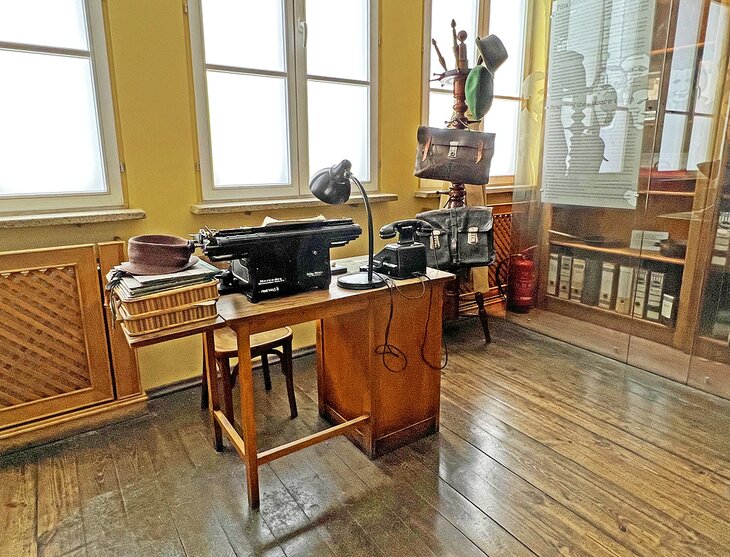
Schindler's former office, which has been preserved intact since War times, is now an exhibit dedicated to his life and the lives of the 1,200 people he helped save by employing them in this very factory. In the office, a wall of glass known as the "Survivors' Ark" serves as a time capsule, full of enamel pots manufactured at the factory.
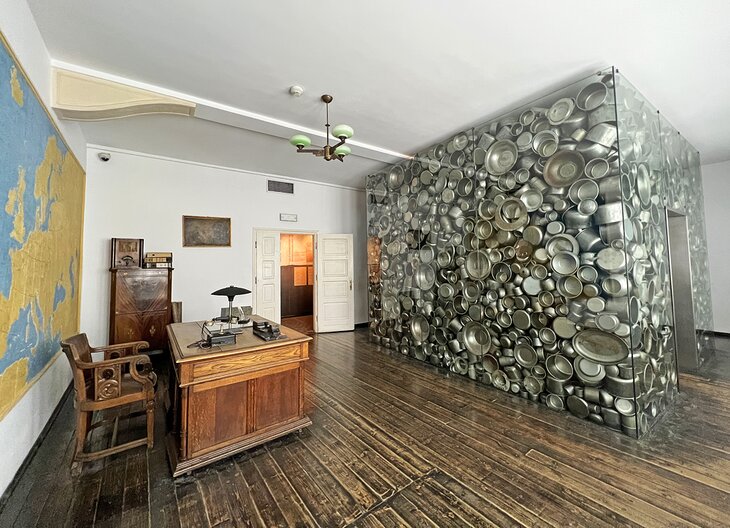
The rest of the factory presents a number of cinematic exhibits that show Krakow during the War and the impact the Nazis had on the history of the city and the lives who inhabited it. There are also a number of immersive stage-like reconstructions of 1940s spaces — from a typical street to the seats of a tram to a typical Jewish apartment of the time.
Morskie Oko, Tatra National Park
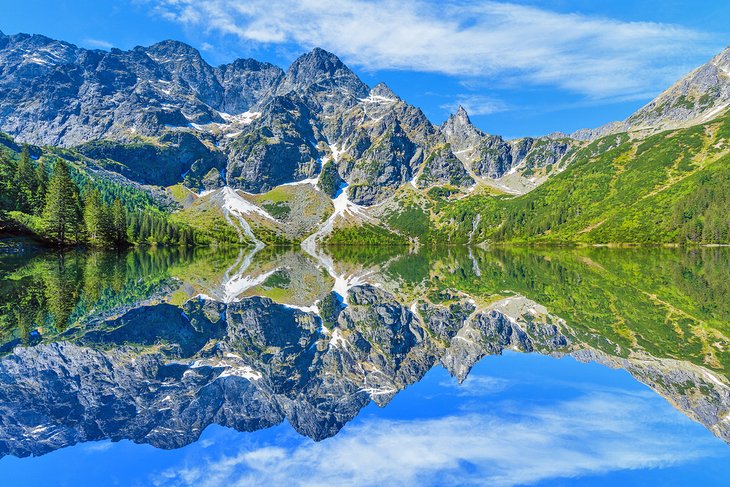
Located deep within Tatra National Park and surrounded by towering mountains and Swiss pines, Morskie Oko is a lake and a favorite destination for people of all ages. Reaching it requires an easy but long paved hike through shaded forests. The lake changes color throughout the year, transforming from a deep shade of blue to a softer turquoise hue. If you're up for more walking, take the nearly 3-kilometer-long trail that circles the lake to see it from all angles.
Tatra National Park extends through both Poland and Slovakia. In Poland, it's home to over 600 caves; snow-covered peaks; and a number of waterfalls, including the 70-meter-tall Wielka Siklawa.
Most of the park is hikable, with over 270 kilometers of trails of all lengths and difficulties.
Wawel Cathedral, Krakow
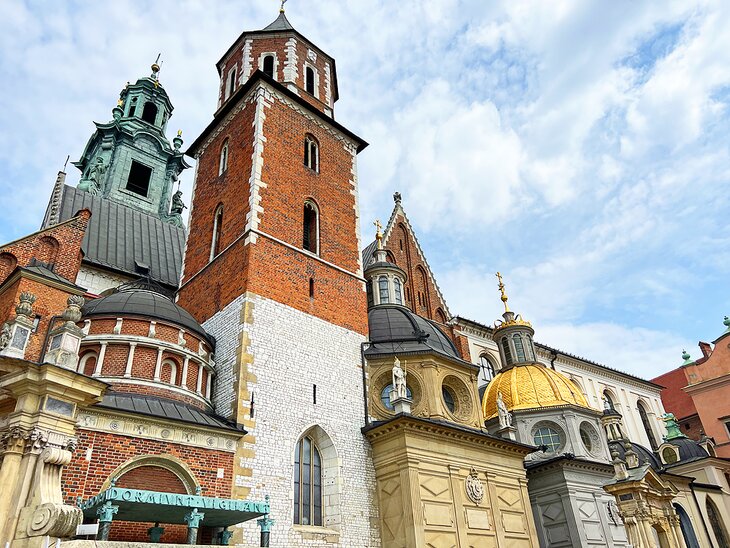
The first Wawel Cathedral was built over 1,000 years ago, though the current one — a fascinating combination of Romanesque, Baroque, Gothic, and Neoclassical elements — was built in the 14th century after a massive fire destroyed earlier buildings.
For centuries, the cathedral was the burial place of Polish monarchs, though most of the tombs now reside in the labyrinth of underground crypts located right under the cathedral.
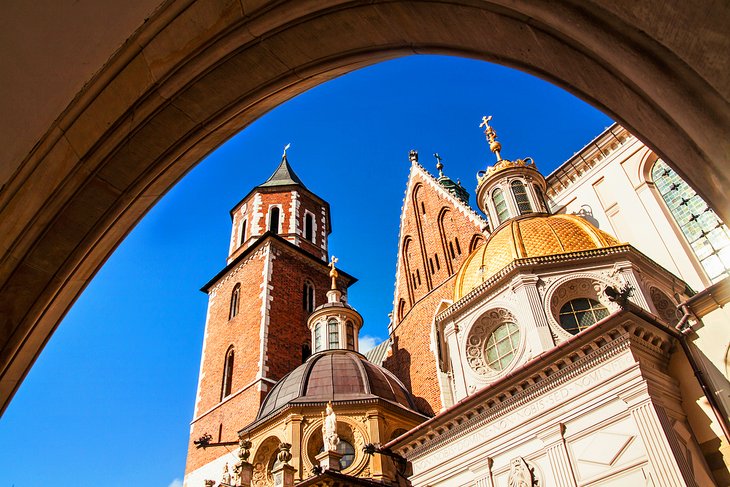
In addition to the main cathedral, there are also a number of smaller buildings outside, including the Sigismund's Chapel, famous for its beautiful golden dome. Even more famous is the Sigismund Bell, which — as the largest church bell in the country at 11 tons — requires the strength of 12 people to ring it. The 70-meter-tall tower holding the bell also offers a great viewpoint over the city.
Crooked Forest, Gryfino
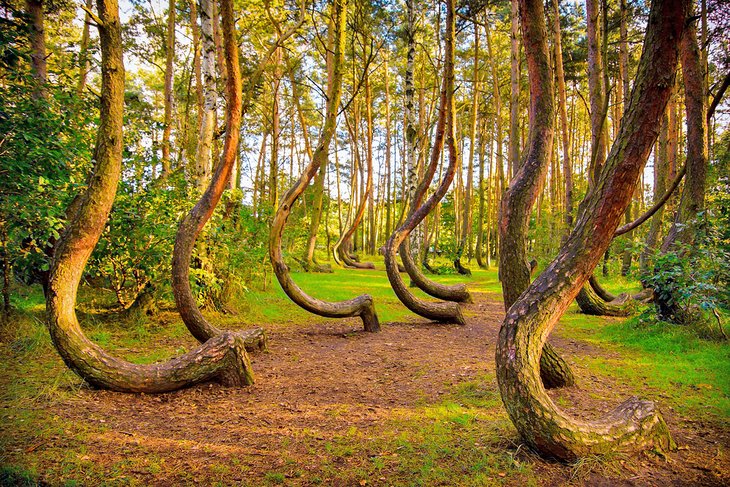
Located just outside the tiny town of Gryfino, the Crooked Forest is a (perhaps) natural marvel that defies explanation. Here, a number of pine trees stand on their own, growing with a 90-degree angle at their base, all bent northward in a J-shape.
The 400 pines were originally planted here in the 1930s, but it took about 10 years before the trunks started to show their characteristic bent. Despite many theories, there's a standing heated debate on whether the curvature was created artificially by manipulating the trees or whether it just happened naturally or accidentally.
Regardless of the cause, the eerie presence of the trees is hard to deny, especially as the rest of the forest is full of healthy, perfectly straight pine trees. The protected natural monument is a great place for a quiet hike in the silence of the forest.
Wolf's Lair, Gierloz
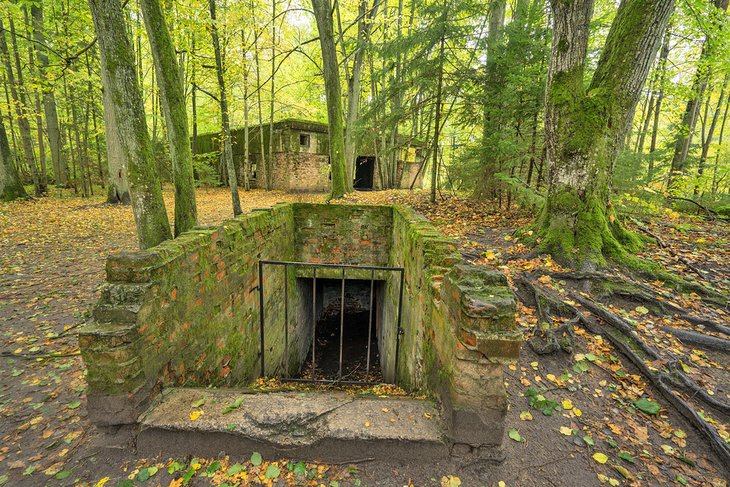
Hitler's top-secret military headquarters is hidden deep in the Masurian woods. When it was active, Wolf's Lair had three fortified security areas around it and was defended by land mines in addition to heavily armed units. Staying for more than 800 days, Hitler spent more time here than anywhere else during the war.
At the time, the area included over 120 buildings, including several air-raid shelter bunkers, watchtowers, and a railway station. The Nazis blew up the complex in 1945 before fleeing the approaching Soviet Forces, but some of the buildings were so heavily reinforced, they could not be destroyed.
Visitors can now make their way to the area as a day trip from Warsaw. It's mostly a collection of ruins to walk through, although information panels and a documentary offer some context about the site. A museum is planned for the future.
Slowinski Sand Dunes

Part of Słowiński National Park on the Baltic coast in northern Poland, the 500 hectares of "moving dunes" here are considered a curiosity of nature. Their name comes from the fact that the dunes actually change form and move along the 32 kilometers of shoreline throughout the year, as winds and waves crash against the beach.
Depending on the weather, the dunes can move up to 10 meters per year and reach heights of up to 30 meters.
While the shifting sand dunes are the park's main attraction, you'll also find forests, bogs, lakes, and around 140 kilometers of hiking trails. And once you make it over the dunes, you'll find a beautiful beach and clear blue waters.
Biskupin Settlement

Often referred to as "the Pompeii of Poland," the Biskupin Settlement is a recreation of the original prehistoric settlement that once thrived in the same place around the late Bronze Age.
Now an archeological open-air museum that tells the story of ancient Poland, the settlement showcases what life would have been like back then, with log houses (the original settlement included over 100 homes, each designed to house up to a dozen people) and streets covered with wooden planks (as the location meant the streets were always wet and the ground always soft).
The settlement is surrounded by a tall wooden wall that's over 450 meters long and includes a watchtower near the entrance gate.
Next to the reconstructed settlement, you can visit an indoor archeological museum that traces the history of Biskupin and showcases artifacts uncovered at this site.
Map of Tourist Attractions in Poland
More Related Articles on PlanetWare.com
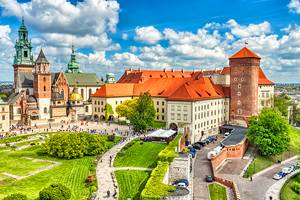
Exploring Poland: Poland is one of the cheap places to visit in Europe – it offers great food, affordable accommodations, and plenty of unique destinations. For tips on things to do when visiting, take a look at our list of the Places to Visit in Poland.
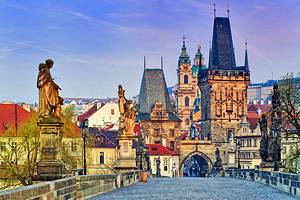
Crossing Borders: Poland is strategically located, allowing easy access to many other countries in Europe. Spend a weekend discovering the tourist attractions in the Czech Republic, just a few hours away, or head over to Germany, even closer. Take a look at the many things to do in Germany in our article, Tourist Attractions in Germany.


